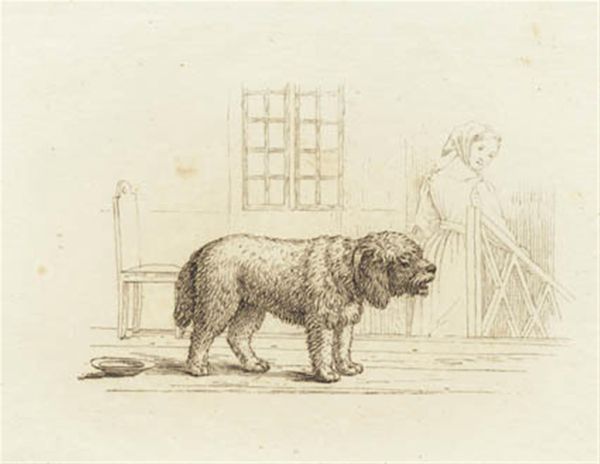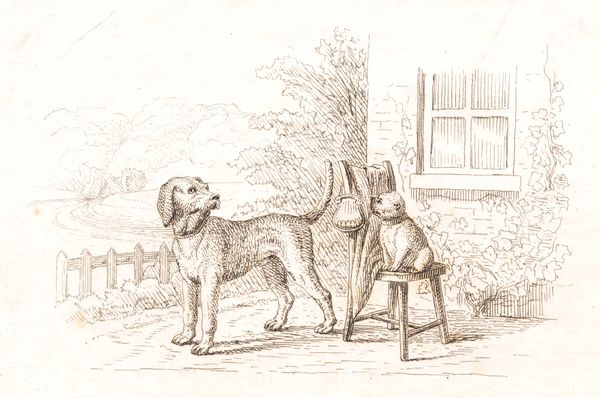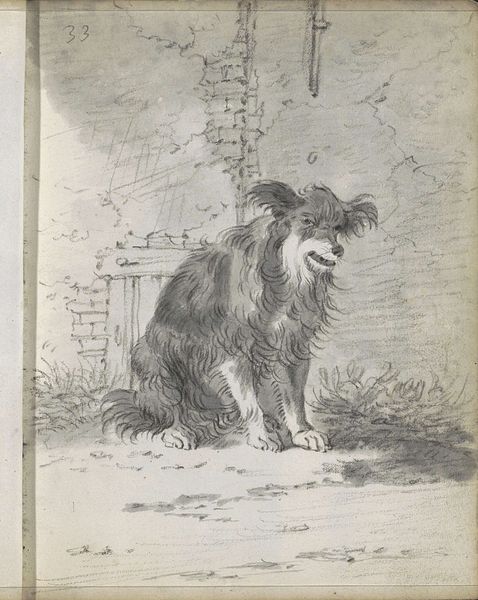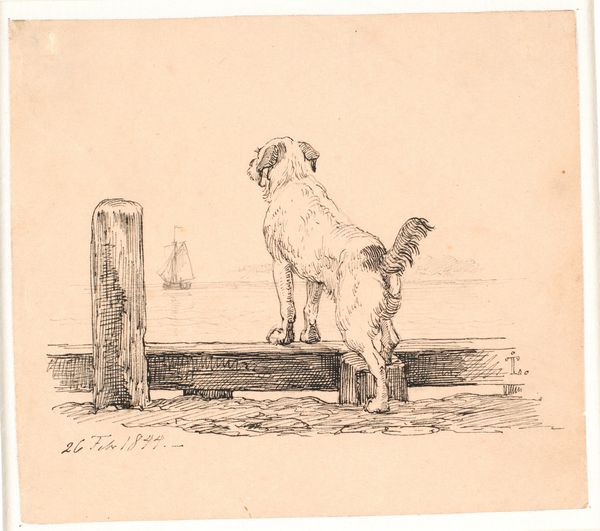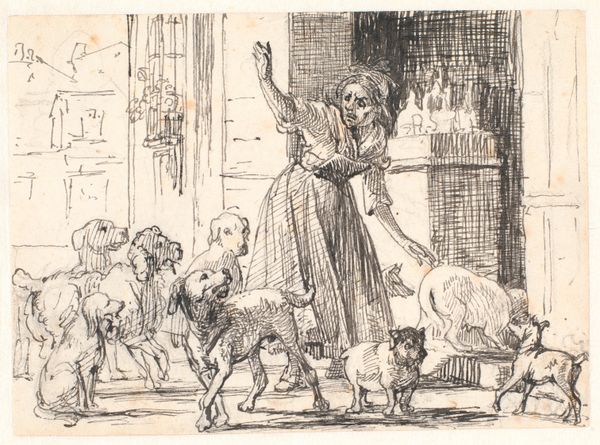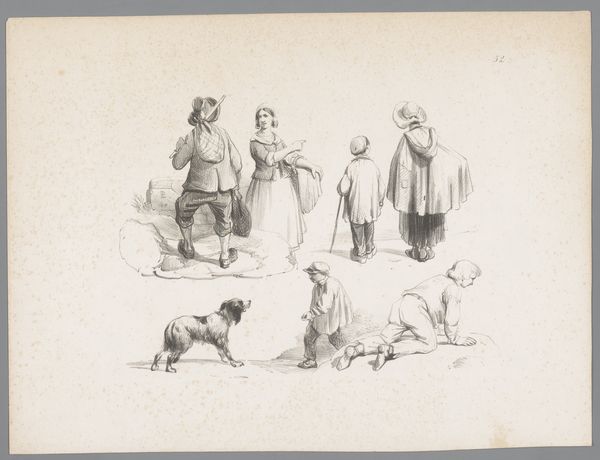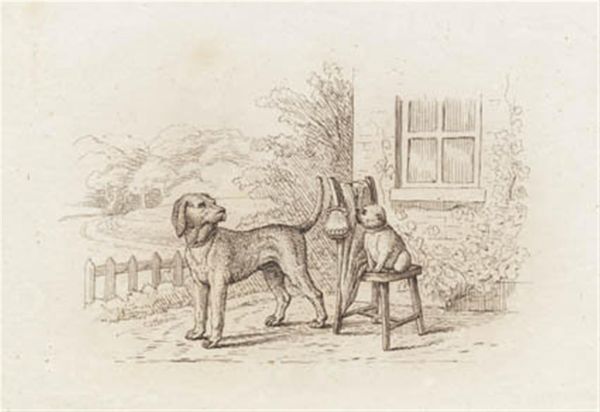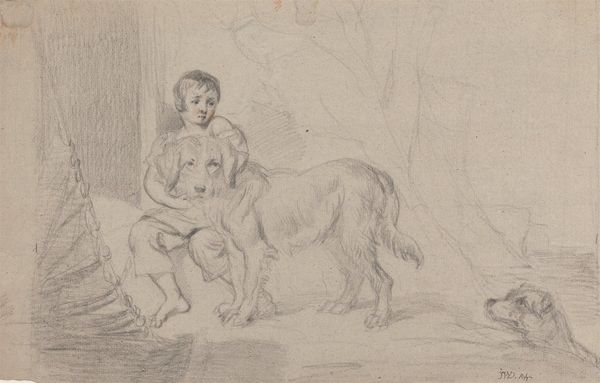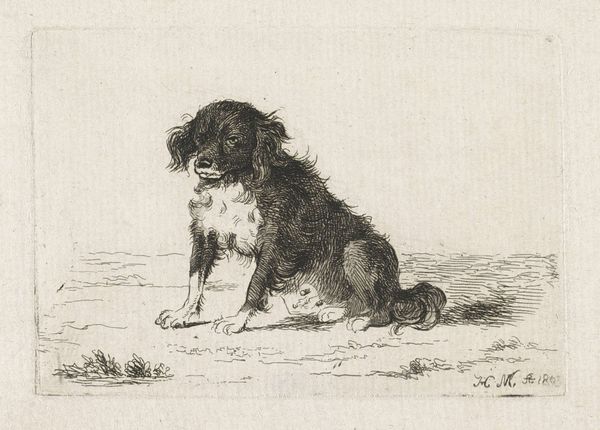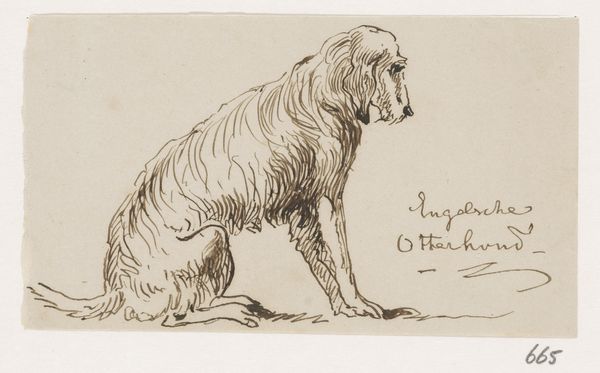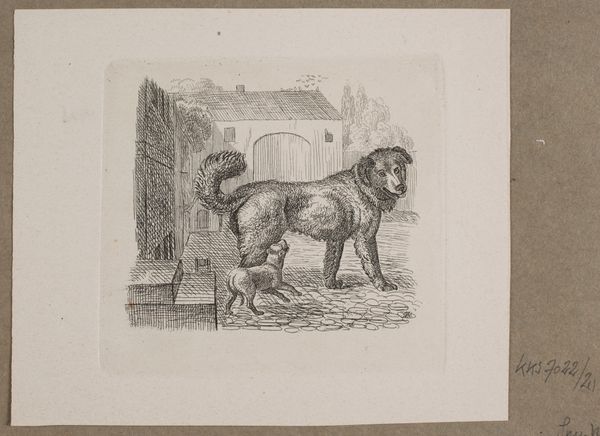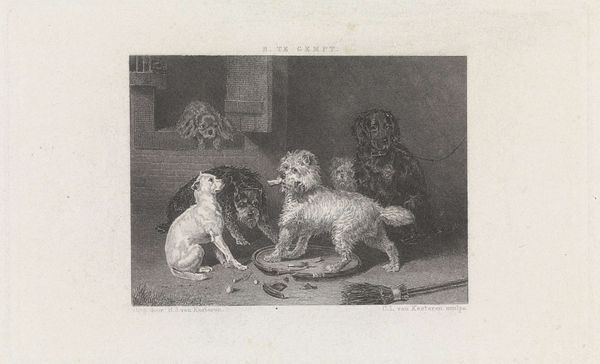
Illustration til "Halvhundrede Fabler for Børn" af Hey 1834
0:00
0:00
drawing, print, pen, engraving
#
drawing
#
narrative-art
# print
#
landscape
#
figuration
#
line
#
pen
#
genre-painting
#
engraving
Dimensions: 87 mm (height) x 120 mm (width) (bladmaal), 285 mm (height) x 209 mm (width) (plademaal)
Curator: We are looking at Martinus Rørbye’s "Illustration til 'Halvhundrede Fabler for Børn' af Hey," created in 1834. It is a print executed using pen and engraving techniques. Editor: The texture of the dog’s fur is so engaging, practically begging to be touched, contrasting sharply with the relatively smooth plane of the door behind it. It’s a composition of contrasts and simple line work. Curator: Indeed, Rørbye's strategic use of line builds depth, differentiating surface qualities. Note the clear linear structure juxtaposed with the woman’s softer, rounded forms; the structural contrast imbues narrative depth. The composition places significant emphasis on form and the interrelationship of depicted shapes within defined space. Editor: For me, the looming dog takes on symbolic weight. A child's fable often carries a clear moral message. The oversized dog might represent protection but could equally symbolize a hidden danger or perhaps a warning. Its presence so close to the plate hints at a possible future transgression, challenging conventional boundaries of acceptable animal behavior in the domestic space. Curator: I find it interesting how Rørbye deploys the perspective. The slightly elevated vantage point offers a full, unobstructed view of the depicted characters and the overall compositional structure. The visual plane functions cohesively; the space isn't fragmented but systematically unified, establishing relationships between all depicted objects. Editor: Ultimately, this piece offers insights into the societal perceptions of safety, childhood morality, and perhaps also gendered space in early 19th-century domestic life, all mediated through a carefully constructed symbolic field. Curator: It's remarkable how Rørbye harnesses linearity and spatial relationships to convey the fable’s foundational essence with precision and clarity. Editor: I agree, observing these elements helps deepen the symbolic complexity of a seemingly simple illustration.
Comments
No comments
Be the first to comment and join the conversation on the ultimate creative platform.
